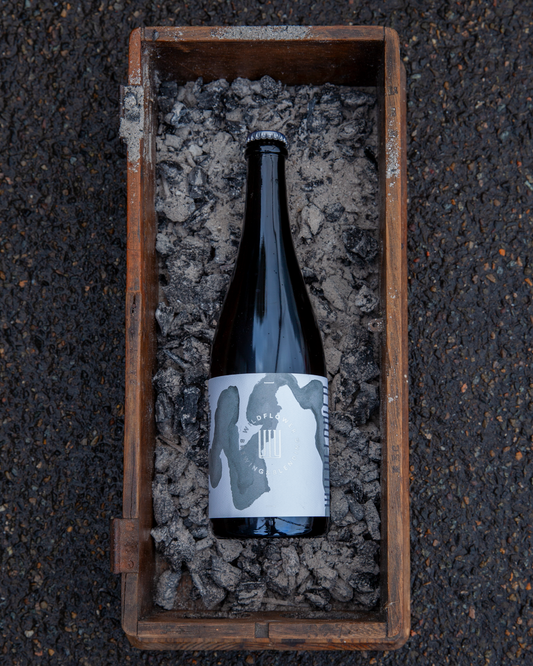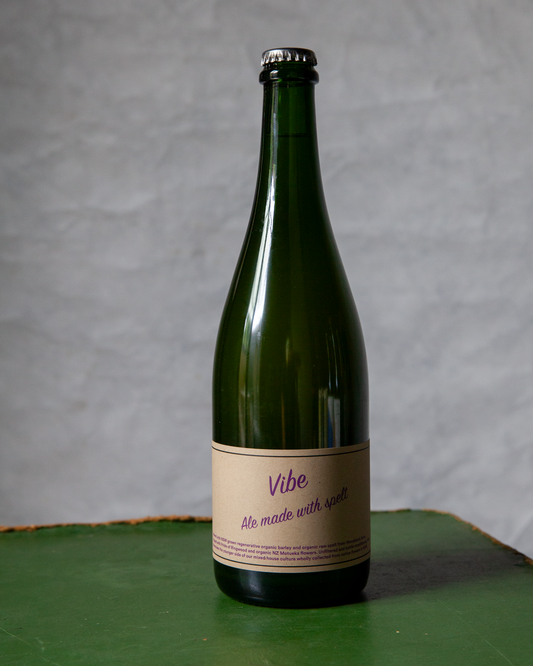This is the third post in an ongoing series. This series, 'Process', focuses one-by-one on specific elements of how we make our beer. The first post on fermentation geometry can be found here. The second post on wild yeast wrangling can be found here.
Intro
One of the most frequent things I get asked about is how we work with our barrels. There seems to be not only a fair bit of intrigue surrounding good barrel procedures but also a lot of confusion. Some ‘suggestions’ I have heard or seen online are not things I would quite recommend from my own experience.
However, that points to one of the most central caveats about this whole subject, it it subjective. We all have our own experience and our own influences which dictate what each of us who works with barrels calls ‘best practice’.
Since the brewing industry almost entirely lost the tradition of working with barrels, many of us are starting from scratch. Some brewers are influenced by French-trained winemakers, others American-trained, some from whiskey distillers, others from bourbon. Each of these trades has their own peculiar, specific ways to work with and treat their barrels. As a result, beer brewers are morphing their influences with their own brewhouse practice and sensory experiences to create regimes that work for them.
So take what I say with a grain of salt. In fact, some of this deviates from a similar post I wrote in 2015 on my old blog, Farmhouse Beer Blog, about barrel work. At that time, I was mostly gathering information from other producers, while now at Wildflower with well over 80 barrels and my own experience. So what follows is how we treat our barrels at Wildflower right now. We will no doubt learn more and adapt to our environment as things work better or worse than other.
Sourcing
We source all of our barrels from the wine industry. Over the past few years we have formed relationships with a number of wineries across NSW that we purchase them from. The most important thing, in my opinion, about the barrels you obtain is their own lineage after they left the cooper. Less important is what was in them, rather how does the winery treat them. Are they maintained in a properly humidified cool room during their life? Are they gently handled on racks and forklift or is there a lot of manual handling which can damage the exterior of staves? Most importantly, how where they stored once emptied… dry with a sulphur stick or wet with a good sous solution.
We work with the same wineries because we know how they treat their equipment and we trust the barrels we buy are in good nick. Our preference is for them to never have been stored dry and have had a light (read not heavy on sulphur) storage solution replaced every 3 months if kept empty for that time.
Selection
We select only neutral-French oak barrels from reputable coopers. Compared to American and Hungarian oak, French oak has a tighter grain which doesn’t lend the same vanillin tannins to the beer. ‘Barrel character’ for us does not mean a beer that tastes like wood, it’s a creamy, spiciness that is far more subtle. This is also why they are neutral, meaning they have been used by the winery for a number of years previous to us purchasing them. The initial toast and oak flavour is far too intense for moderate alcohol beer.
We also look for external stave damage, warped headboards, stains from leaking wine, or excess damage along the top and bottom hoops from a lot of rolling. All of these things are potential places for undesirable oxygen ingress which can lead to the production of acetic acid (vinegar) by acetobacter. There are all kinds of other things we do around the brewery to inhibit acetobacter so getting a sound barrel to start with gets things going in the right direction.
Pre-fill prep
Once we get the barrels to the brewery we will hold them there until we need to use them. To date, all of the barrels we received have been filled with an appropriate holding solution, or sous. We will touch on this more in the final part of this post, but for filling it means that our barrels are always ‘wet’. The staves are swelled and there are sealed. Because of this we don't need to swell the heads with water or fill them with water before in order to make the staves tight. Not only does this save us some time before filling, but also we believe it is a better way to maintain the integrity of the barrel.
The day of filling, any barrel with a holding solution gets a hot water, high pressure wash on a Total Concept barrel washer. This is an Australian-made piece of equipment that fits inside the bung of an upside-down barrel and sprays through a rotating head water from a pressure washer. Our setup is powered by a 15A Kranzle 599T pressure washer with ~60 deg water getting sprayed internally at around 70-90psi. The washer does a lot of things, but primarily breaks off titrates from the wine, washes out residual flavours from either the holding solution or the wine itself and gives the barrel a semi-steamed environment for a light sanitation. While the barrel is empty the holding solution maintains an environment too harsh for microbial growth, so this steam is only insurance. At this stage, some breweries and wineries steam their barrels for additional sanitation and swelling. We don’t do this because we don't have a steamer. We may look at adding this or ozone to the process in the future, but for the time being are happy with how things have been working.
After coming off the washer, the barrel is drained of any water left in it from cleaning and begins to be purged with CO2 in preparation for being filled. At a slow flow rate, it usually takes 7-10 mins to completely fill a barrel with CO2.
Before we fill our barrels, we give them a good wax around the bungs to prevent the production of acetic acid. Firstly it helps reduce the oxygen ingress through the most exposed wood in the barrel. As small amounts of evaporation happen naturally and ullage increases, these staves are most likely to dry out and be the easiest membrane for outside oxygen get in. Secondly, the wax helps wick away any beer that might overflow out of the bung during a very active secondary fermentation in barrel. Fruit flies love these little bits of beer and they are one of the main sources of acetobacter (the bacteria that produces acetic acid) in the brewery. This is more of a precaution but we can never be too careful when it comes to keeping acetic acid out of our beers.
After this, the barrels are branded and marked with their barrel number, the product within it and the date of filling. We also drill and install a ‘Vinnie Nail’ for sampling. See this post on Milk the Funk about this.
At this stage, they are ready for beer. We always rack beer that has just a little bit more fermentation to go into barrel. Usually the beer is about 7-10 days old and has another 1 P left to go. This small about more of fermentation helps scavenge any oxygen pickup that may have been in the barrel or picked up during transfer. The beer is then pumped into them via a gentle, flexible impeller pump.
They are filled right up to the top and fitted with fermentation bungs from AR Black. Another Australian product, these are silicone bungs fitted with a stainless steel little insert that allows for fermentation CO2 to escape but keeps enough of a seal in the midterm to keep out oxygen. See the photo below.
![]()
Once they are full, we wash off any spillage on the exterior with water and they are put into the cellar.
Usage in the cellar
Once the barrels are put away, they will stay filled for anywhere between 3 months to years. When they are used and what flavours they lend at different stages of that ageing is the subject of another post.
For now, the only hard rules for us are that emptied barrels either get filled within 24 hours or they get fully cleaned and prepped for storage using the methods below. Ideally we empty and rack back into our barrels within the same day. The barrels will always be in a CO2 environment during any lag time between emptying and filling.
Storage
When we prepare our barrels for empty storage they are firstly washed on our barrel washer, the same was as we described in our pre filling prep. This help break off any residue in the barrel that could be some place for nasties to grow.
We empty the water out of them and fill them with a sous. Common in the wine industry, this mixture of sulphur and some sort of acid liberties active SO2 within a confined space which makes for a very hard environment for microbial life. As the solution is active, it does deteriorate over time which means it needs to be refreshed every 3 months. Take note that barrels stored warmer (18 C+) should be refreshed more often than this.
For a 228 l barrique, we add 20 l of cold water 40g of sulphur (Potassium metabisulphite) and 10g of tartaric acid. This rate should be scaled up or down depending on the volume of the barrel you wish to sous. It is best to dissolve the sulphur and acid in water (separately!) before adding them to the water for a better mixture. Note: do not mix the sulphur and acid outside of the barrel! You may become sick!
Once the solution is in the barrel, seal it with a bung and mark on the barrel the date you prepared the solution last.
_______
As always, please feel free to send any questions to us at info@wildflowerbeer.com on barrel work.
best,
topher




